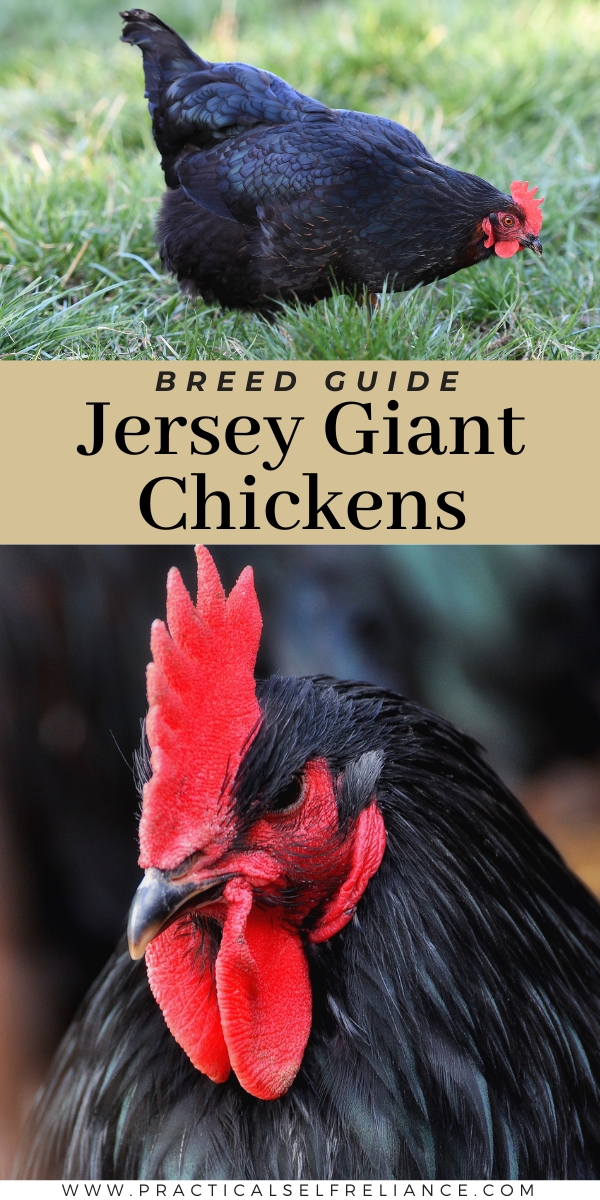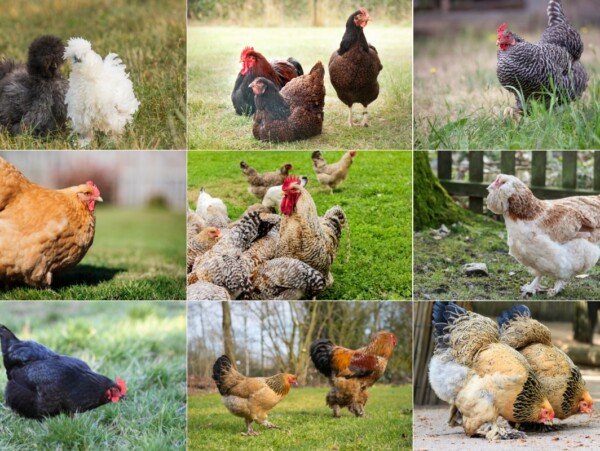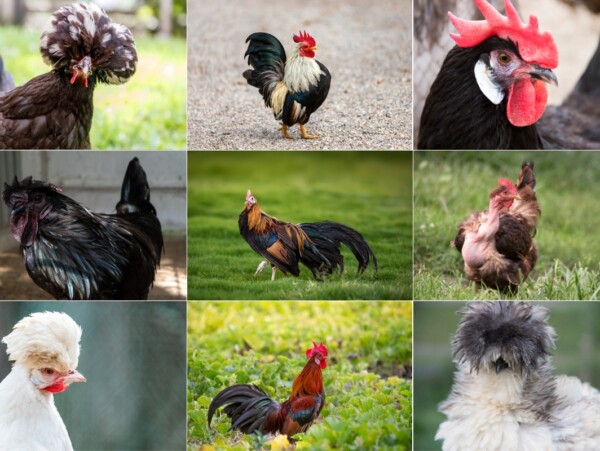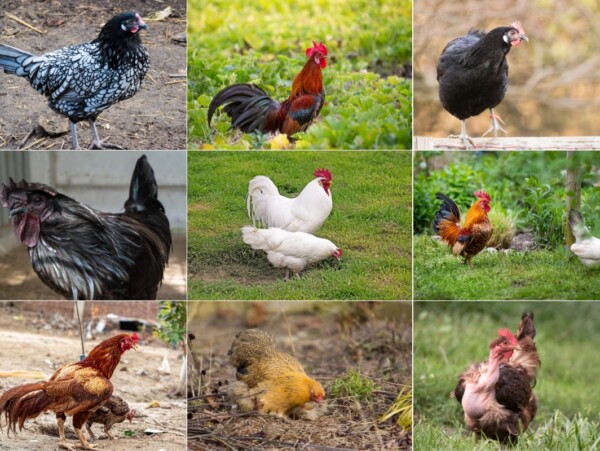Affiliate disclosure: This post may contain affiliate links. Please see our Privacy Policy.
Jersey Giant Chickens are a dual purpose chicken that’s raised for both eggs and meat. They’re known for being friendly, docile and exceptionally large chickens.
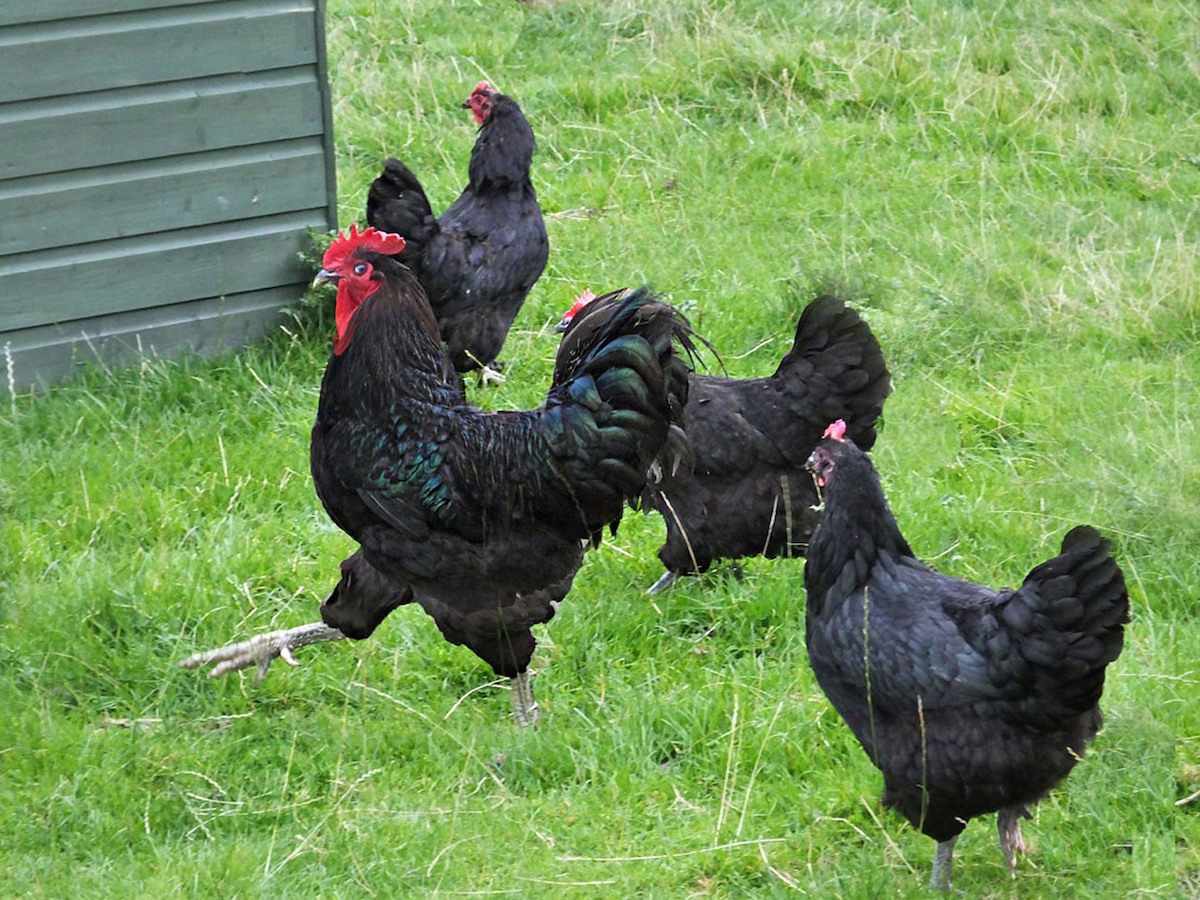
What are Jersey Giant Chickens?
When John and Thomas Black of Burlington County, New Jersey, developed the Jersey Giant between 1870 and 1890, they intended to replace the turkey as a top-of-the-line food source. Interestingly, they were named “Black Giants” as an homage to their developer, not their color. It wasn’t until later, when Dexter P. Upham chose to improve the breed, that the name changed to “Jersey Giant.” The name was officially adopted when the American Association of Jersey Black Giant Breeders Clubs was created in 1921. A year later, they were recognized by the APA or American Poultry Association. Recognition came for the White Jersey Giant in 1947 and the Blue Jersey Giant in 2003.
The Black Giants have a green iridescence, compared to a “beetle green,” with black legs, yellow soles, black beaks, and four toes on each foot. Whites are willow colored with yellow beaks and soles that sometimes resemble the White Leghorn. And the Blues are dark willow to black, with slate blue body color. These large birds weigh from ten to fifteen pounds and can stand 26 inches high.
Jersey Giants are currently listed as “watched” on the Conservation Priority List and considered a rare breed. It wasn’t that long ago that the birds were considered critically endangered, but chicken keepers have concentrated on popularizing the species once again.
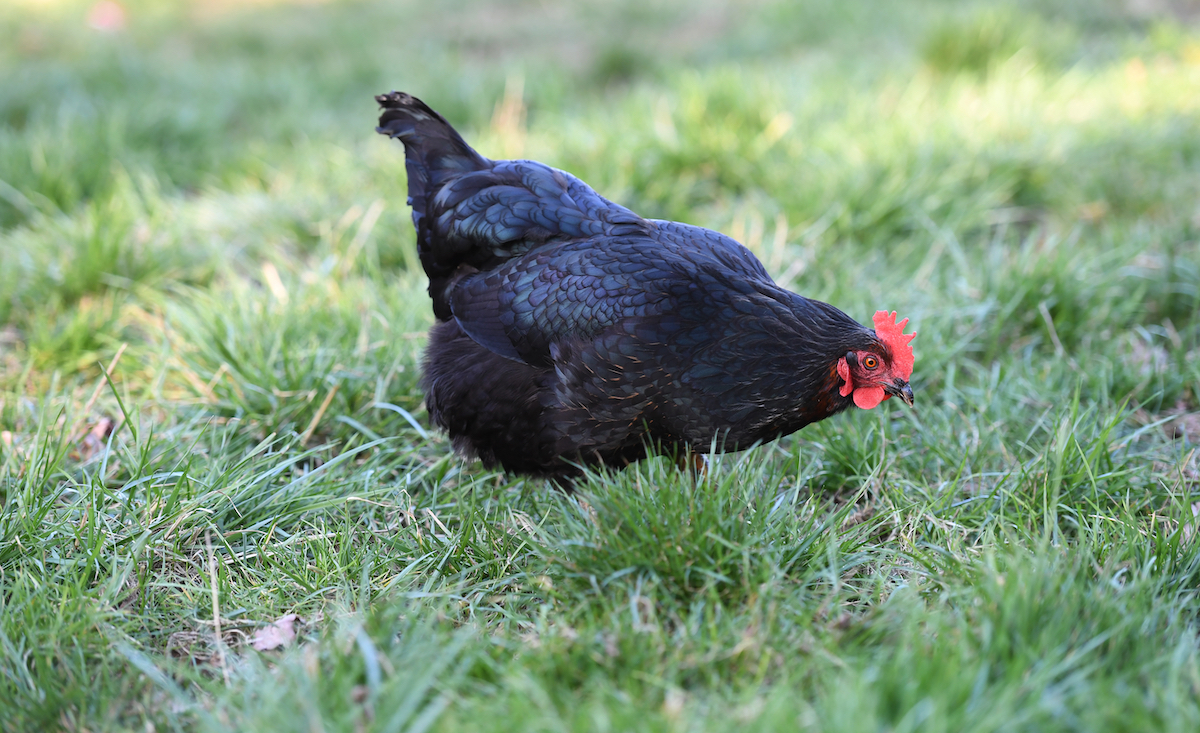
Jersey Giant Chicken Characteristics
Jersey giants are dual-purpose birds, providing eggs and meat due to their gigantic size. Hens sometimes go broody, but the problem then is that their weight can cause them to crush their eggs. They’re cold-hardy but don’t do well in the heat, so precautions must be taken in these situations.
You’ll enjoy how calm and docile these birds are, which makes them the perfect flock mate for other breeds, but they will fight predators if necessary. They aren’t as likely to fly, again, because of their weight, and they’re fond of their handlers.
- Breed Name: Jersey Giant (Black, White, and Blue)
- Breed Type: Standard Dual Purpose
- Temperament: Calm, Friendly, and docile
- Size: Jumbo/Giant
- Eggs Per Year: 200+
- Egg Size: Extra Large
- Egg Color: Brown
- Lifespan: 8 to 10 years
- Time To Maturity: 8 to 9 months (32 to 36 weeks)
Pros and Cons of Jersey Giant Chickens
This guide will cover everything you need to know about Jersey Giant chickens, but if you’re looking for a quick list of pros and cons, I’ve got you covered:
Pros
- Healthy and not susceptible to illness or disease
- Fair egg production
- Very easy going, pet-like temperament, making them perfect for children
- Foraging for pest control
- No fear of predators
- Integrate into other flocks well
Cons
- Requires coop modifications
- Long maturation rate
- Requires lots of food
- Heavy bodies can result in leg injuries and broken eggs when broody
- Needs lots of roaming room
Jersey Giant Breed Standard
For standard breed consideration, these birds must be black, white, or blue. Other varieties exist, including splash and silver, but aren’t yet recognized by the APA, although breeders or working to this end. They must also have red combs and wattles. Males should weigh 13 to 15 pounds and be 22 to 26 inches tall, while females must weigh an average of 11 pounds, standing 16 to 20 inches tall.
Feathers feature a clean-cut look, and the male tail feathers are shorter than other breeds. They have no feathers on their legs.
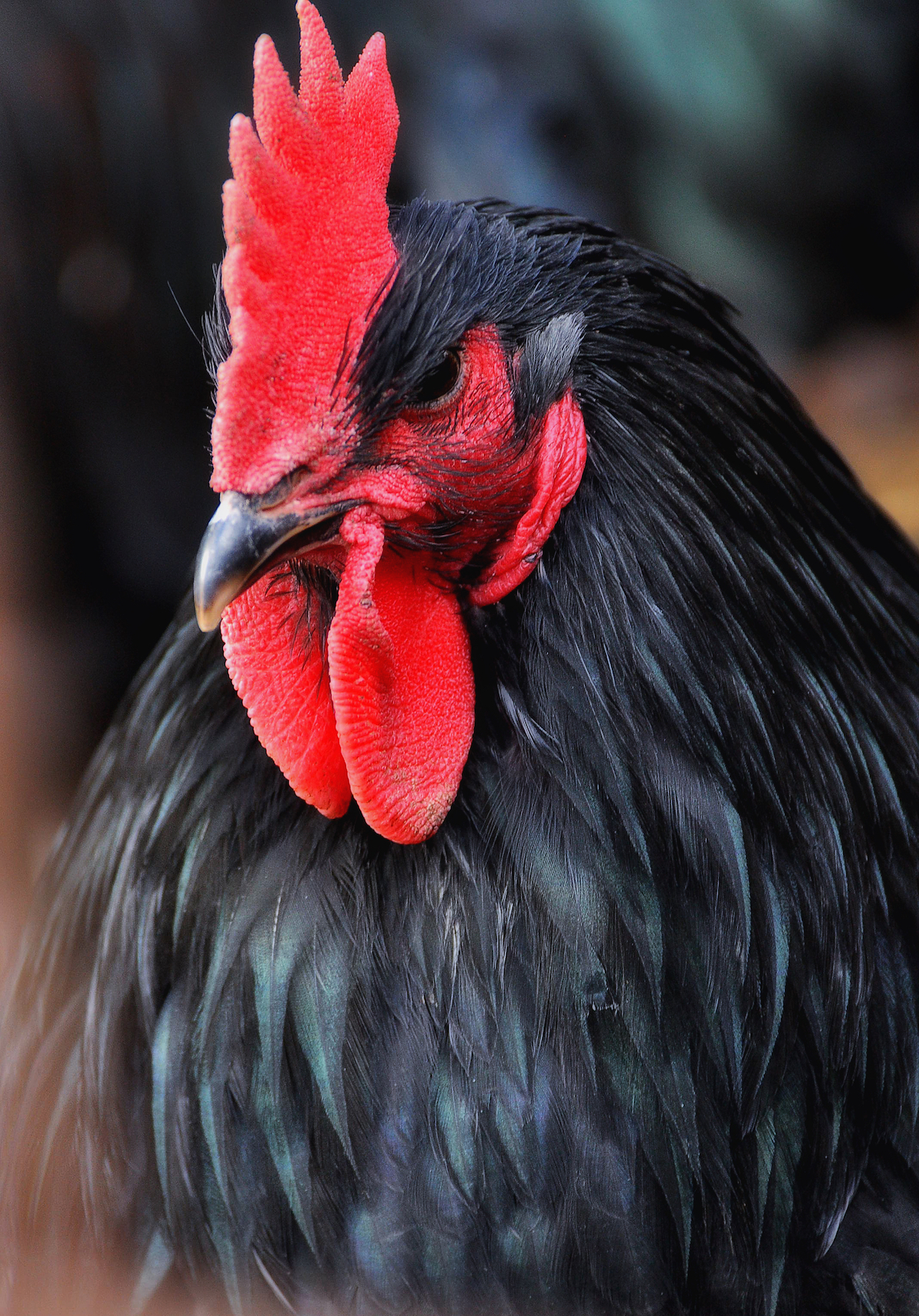
Temperament
Jersey Giants are as happy and calm when you’re holding and petting them as they are when they’re foraging around the farm or yard. They’re incredibly calm, though this can often make them easier prey for certain predators. However, if you already have a flock, they will assimilate well, as they are one of the least aggressive chicken breeds.
Hardiness
If you live in a cold climate, these birds are incredibly hardy. But in hot climates, they need lots of modifications to flourish. They don’t tolerate extreme heat well at all.
Egg Production
The Jersey Giant isn’t the best choice if you’re looking for a prolific egg layer, as they only lay about 150 to 200 extra large eggs each year. But they do lay regularly and provide two to four eggs each week, laying through the winter months as well. And since they’re so large and late-maturing, you won’t see eggs for eight to ten months, even with the best nutrition and circumstances. Some owners have noted egg production starting as early as five months old, and others, at a year old.
Egg Color
Egg color ranges from light cream to light brown.
Meat
It takes patience to attain the meat these birds are prized for, which is robust, juicy, and flavorful. You can harvest them from six months of age up to more than a year and a half before the meat texture changes. Some chicken owners prefer to wait longer to allow them to gain more weight, which brings more yield for your money.
Broodiness
Broodiness is a common trait among Jersey Giants, and they make excellent mothers once the eggs hatch. However, their size can cause cracked eggs, so some chicken keepers take them and give them to a smaller chicken. Since they’re good mothers, however, you can wait to see how your Giants do with their clutch before making the decision.
Foraging Ability
Jersey giants love to forage for bugs and insects, which helps supplement their diet for protein needs. You can allow their foraging with confidence because they won’t wander far from home, and they’re far too large for hawks or other birds of prey to carry off.
Cross Breeds
To develop the Black Jersey Giant, Thomas, and John Black combined Dark Brahma, Black Java, and Black Langshan breeds.
Common Health Issues
There are no primary health issues known to the Jersey Giant breed line. The biggest concern is leg problems, but you can manage these by making sure their roosts and perches are close enough to the ground so that they don’t have to jump too far in the mornings.
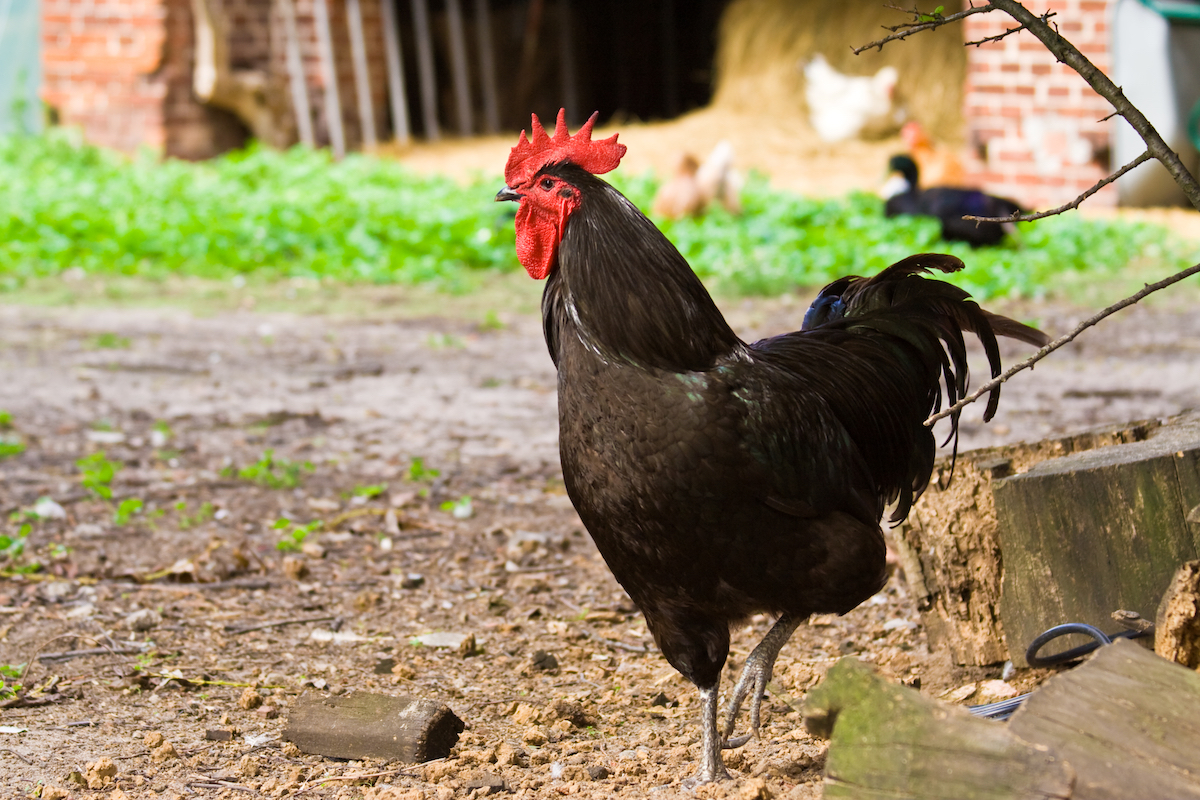
Tips for Raising Jersey Giant Chickens
Coop modifications are necessary for Giants, including larger nesting boxes, more roosting space, and bars closer to the ground to prevent injury. This breed is incredibly healthy, but the main health issues are generally related to leg injuries.
Due to their size, you’ll want to provide a spacious area over cramped quarters, planning for about six to eight square feet per bird. Take time to research the best options for feed. We generally recommend a grower’s mash for chicks, with 19% protein, and a good 16% protein pellet for grown chickens. They’ll need even more nutrition after 18 weeks of age, especially if harvesting for meat. At this point, you can give them mash again for added protein. An optimal amount of food for a Giant is from four to seven ounces of food per bird each day.
Jersey Giant Chicken FAQ
At this point, I hope I’ve answered all the common questions about raising Jersey Giant chickens, but if you’re looking for answers at a glance to the most common questions, I’m happy to help!
Are Jersey Giant chickens friendly?
Yes, they are very friendly, especially if you spend time with them.
Are Jersey Giant chickens good egg layers?
No, not when compared to many other breeds. They usually only lay between 150 and 200 eggs per year.
What color egg does a Jersey Giant lay?
Their eggs can range from dark cream to brown.
Are Jersey Giant hens broody?
Some are, and some aren’t, but they are prone to broodiness.
How big are Jersey Giant chickens?
Jersey Giants weigh between 10 and 15 pounds and reach heights between 16 and 26 inches.
Are Jersey Giant chickens good eating?
Jersey Giant meat is one of the tastiest and most robust chicken options, and one bird can feed a family of four. However, you’ll have to be patient. It takes at least six months for this breed to be table ready, and some wait until the second year to butcher. Waiting to harvest means you’ll have a larger bird if you don’t mind feeding it enough to flesh it out.
Are Jersey Giant chickens autosexing?
No. You can’t tell hens from roosters until the birds are nearly mature.
Are Jersey Giant chickens cold-hardy?
Yes, they are very cold hardy, but they do poorly in hot conditions, so be ready to make modifications if necessary.
How long do Jersey Giant chickens live?
Jersey Giant’s lifespans can range from six to ten years. However, if you’re raising them to eat, they’ll be ready in six months to a year.
Are Jersey Giant chickens easy to raise?
As long as you offer enough feed and modify their living quarters, these birds are very easy to raise. They’re happy to free range and won’t stray far from home. They’ll enjoy a wonderful life, making you as much a part of it as possible.
